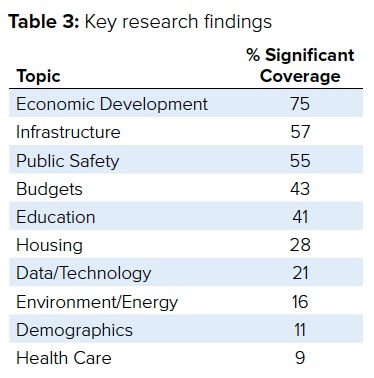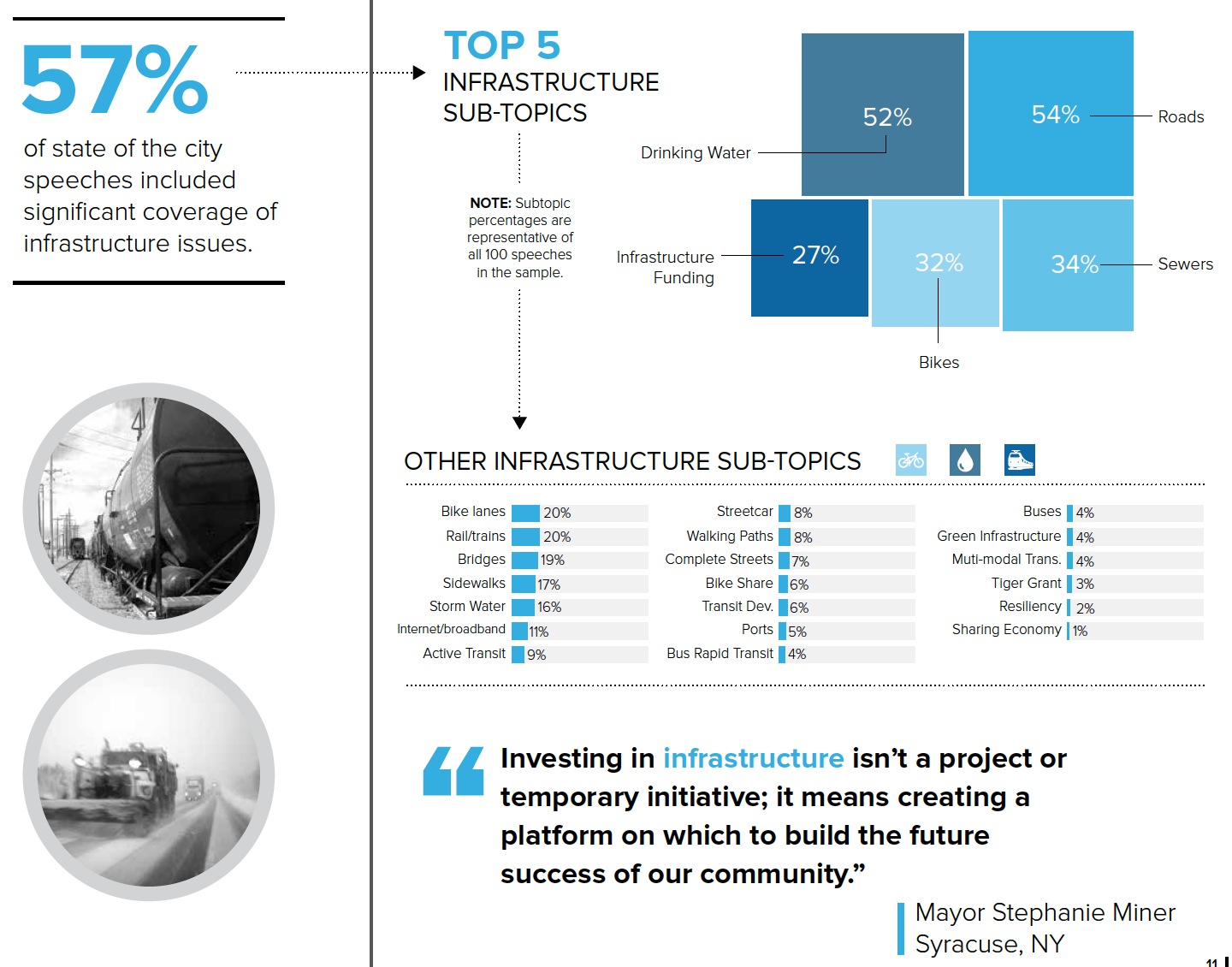NATIONAL LEAGUE OF CITIES
 Mayors are the leaders who shoulder many of our nation’s most critical problems and from whom solutions can arise. NLC stands ready to support city leaders in their efforts to help mend the nation, and through this annual analysis of mayoral priorities, spotlight challenges, opportunities, and progress in our cities. Whether through their roles in economic development, public safety or education, this year’s report highlights ways local governments are providing the leadership needed to create more equitable communities.
Mayors are the leaders who shoulder many of our nation’s most critical problems and from whom solutions can arise. NLC stands ready to support city leaders in their efforts to help mend the nation, and through this annual analysis of mayoral priorities, spotlight challenges, opportunities, and progress in our cities. Whether through their roles in economic development, public safety or education, this year’s report highlights ways local governments are providing the leadership needed to create more equitable communities.
Our State of the Cities 2015 analysis is derived from 100 cities, and represents a diverse cross-section of population sizes and geographic regions (see tables 1 and 2). We begin by assessing the extent to which mayors devote a significant portion of their speeches to certain topics (see Coding Guidelines, page 29, for full explanation). We then identify common narratives around these topics to better understand the evolution of critical issues and how they are being addressed. This annual report provides a baseline for other studies of municipal issues and a benchmark for the consistent measurement of emerging trends.
This year’s analysis reveals:
For the second consecutive year, economic development was the most commonly addressed topic in mayoral speeches, with three out of four speeches (75 percent) in this year’s sample devoting significant coverage to the issue. Issues concerning infrastructure (57 percent), public safety (55 percent) and budgets (43 percent) were also commonly addressed. The scope of these topics has shifted slightly over the past year. When speaking about economic development, for example, subtopics such as workforce development and income inequality received greater attention in 2015 than in 2014, reflecting the accelerating national discourse on issues of equity and opportunity.
Coverage of top line issues didn’t vary significantly by region, although differences emerge in the way these issues play out and are addressed within regions. For example, within infrastructure, mayors in the West were more likely to discuss bikes and bike lanes than those in other regions, whereas mayors from cities in the Midwest, often with aging infrastructure, were more likely to discuss sewers.
The amount of attention an issue received depended on the size of the mayor’s city. For example, mayors from the largest cities were much more likely than those from smaller cities to discuss demographics, economic development, housing and education in their speeches. Infrastructure and budget issues were the most commonly covered topics by mayors from mid-sized cities, and public safety was a chief concern of mayors from small cities.
…
Infrastructure
City infrastructure – which includes roads, bridges, and public transportation, and water and sewer systems – is central to the well-being of cities. Mayor Richard David of Binghamton, N.Y., described infrastructure as “the true foundation of our community.” In their State of the City addresses, mayors commonly prioritized infrastructure investments and detailed innovative policies designed to update infrastructure to meet 21st century needs.
Many of these policies addressed internet and broadband issues. Mayor Jim Gray of Lexington, Ky., noted that Lexington was working with the University of Kentucky to expand access to affordable broadband, and said that “we must really become a gigabit city… knowledge and ideas are what power today’s information economy, and knowledge and ideas are carried on fiber.” In Atlanta, Mayor Kasim Reed announced a new partnership with Google Fiber and said that a fiber-optic network would be installed throughout the city, which he said would expand access to high-speed internet, provide a boost to start-ups and entrepreneurs, and further Atlanta’s “global reputation as a technology leader.” Mayors from Huntington, W.Va., Morganton, N.C., and New Haven, Conn., among others, also announced new internet and broadband-related initiatives.
Mayors frequently saw increased investment in, and expansion of, trains and light rail as essential to creating a modern multi-modal transportation system. In Honolulu, Mayor Kirk Caldwell said that “rail is about giving people a choice to get out of their cars and travel quickly and efficiently,” and is essential for Honolulu to become a “true capital of the Pacific Basin.” Caldwell called for an extension to the excise tax to pay for a new 26-mile railway, which had run intro financial troubles. Salt Lake City Mayor Ralph Becker said he would continue to fight for expanded train service and for trains to run more frequently and for longer hours, both for environmental and fairness purposes. Becker said that increased public transit choices such as trains provide “more people access to schools, jobs and downtown events” and that “if we want a city that treats people fairly, we have to make sure there are opportunities for everyone to get around.” The recent Amtrak train crash in Philadelphia is expected to only increase the emphasis mayors place on trains and light rail initiatives in the future.
Download full version (PDF): 2015 State of the Cities
About the National League of Cities
www.nlc.org
The National League of Cities (NLC) is dedicated to helping city leaders build better communities. Working in partnership with the 49 state municipal leagues, NLC serves as a resource to and an advocate for the more than 19,000 cities, villages and towns it represents.
Tags: cities, Mayors, National League of Cities, State of the City







 RSS Feed
RSS Feed